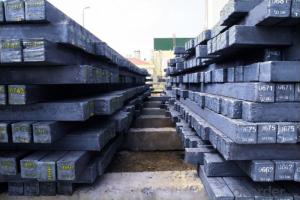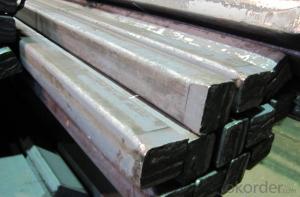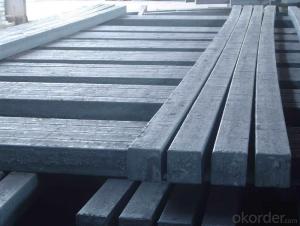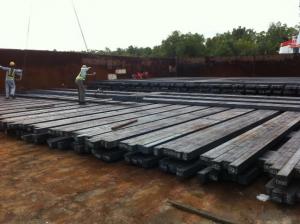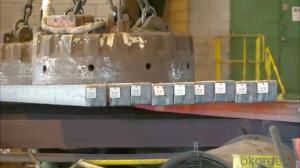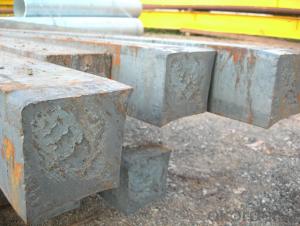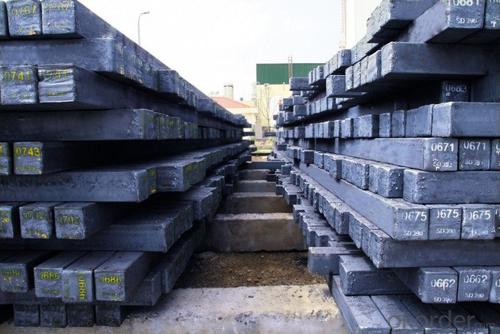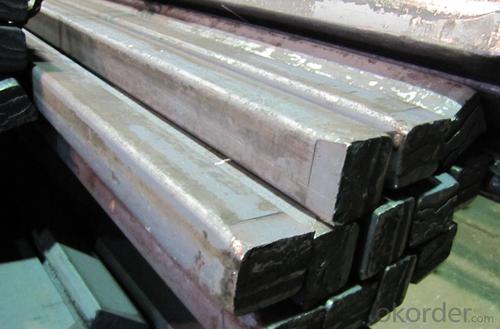Z42 BMP Rolled Steel Coil Construction Roofing Construction
- Loading Port:
- Tianjin
- Payment Terms:
- TT OR LC
- Min Order Qty:
- 100 m.t.
- Supply Capability:
- 10000 m.t./month
OKorder Service Pledge
OKorder Financial Service
You Might Also Like
Structure of Z42 BMP Rolled Steel Coil Construction Roofing Construction 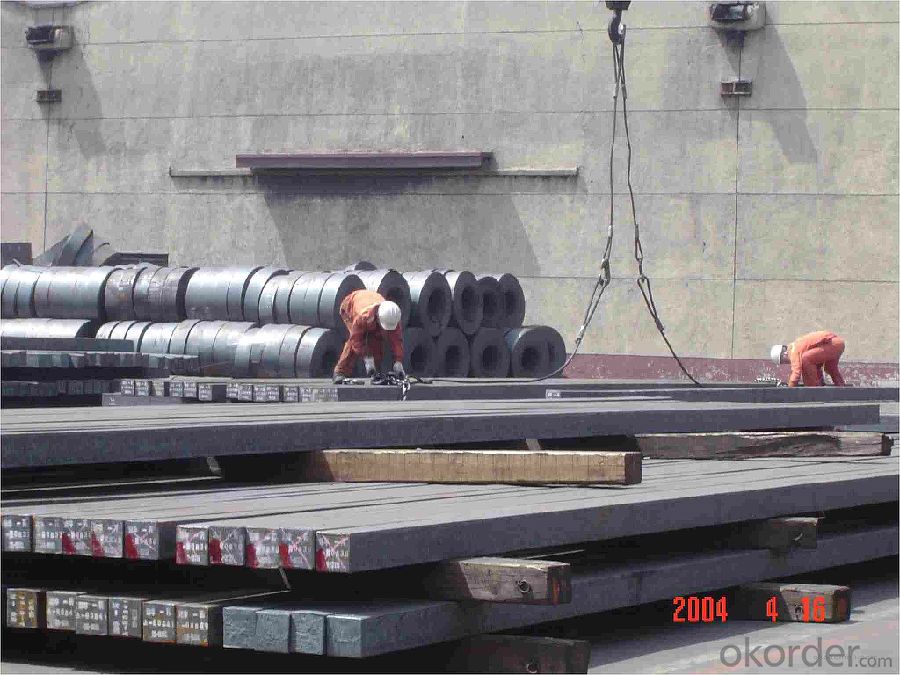
Description of Z42 BMP Rolled Steel Coil Construction Roofing Construction
PPGI is made by cold rolled steel sheet and galvanized steel sheets as baseplate, through the surface pretreatment (degreasing, cleaning, chemical conversion processing), coated by the method of continuous coatings (roller coating method),
and after roasting and cooling. Zinc coating: Z60, Z80, Z100, Z120, Z180, Z275, G30, G60, G90
Alu-zinc coating: AZ60, AZ80, AZ100, AZ120, AZ180, G30, G60, G90
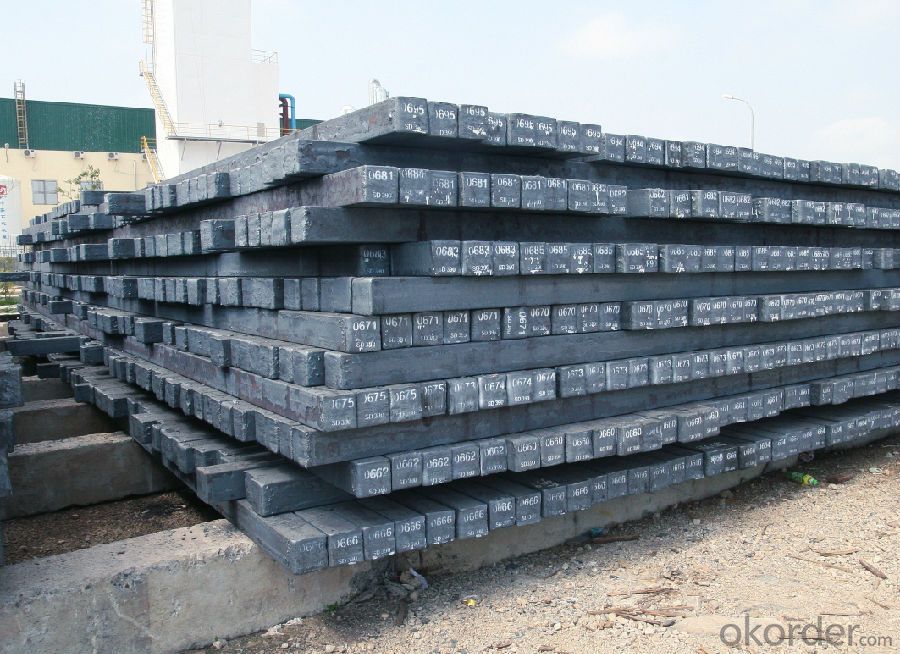
Main Feature of Z42 BMP Rolled Steel Coil Construction Roofing Construction
1) Excellent corrosion resistance: The zinc layer provides a good protection of Pre-painted Galvanizeed Steel Sheet.
2) High heat resistance: The reflective surface of the material aids in efficiently reflecting the sunlight away and in turn reducing the amount of heat transmitted. The thermal reflectivity converts into energy savings.
3) Aesthetics: Pre-Painted Galvanized steel sheet is available in plethora of patterns and multiple sizes as per the requirements that given by our customers.
4) Versatility: can be used in the various areas.Standard seaworthy export packing: 3 layers of packing, inside is kraft paper, water plastic film is in the middle and outside GI steel sheet to be covered by steel strips with lock, with inner coil sleeve.
Applications of Z42 BMP Rolled Steel Coil Construction Roofing Construction
1. Construction and building: roofing; ventilating duct; handrail; partition panel;etc.
2. Electric appliance: refrigerator; washing machine; refrigerator; DVD;etc.
3.Transportation: oil tank; road sign; etc.
4.Agriculture:barn; etc.
5.Others:vending machine; game machine; etc.  Specifications of Z42 BMP Rolled Steel Coil Construction Roofing Construction
Specifications of Z42 BMP Rolled Steel Coil Construction Roofing Construction
| Classified symbol | Yield Point Minimum N/mm2 | Tensile Strength Minimum | Elongation Minimum % | Application | ||||
| N/mm2 | Nominal Thickness mm (t) | |||||||
| JIS | Yogic | 0.25-0.4 | 0.4-0.6 | 0.6-1.0 | 1.0-1.6 | |||
| G3312 | specification | |||||||
| CGCC | CGCC | -205 | -270 | -20 | -21 | -24 | -24 | Commercial |
| CGCD | CGCD | --- | 270 | --- | 27 | 31 | 32 | Drawing |
| --- | CG340 | 245 | 340 | 20 | 20 | 20 | 20 | Structural |
| CGC400 | CG400 | 295 | 400 | 16 | 17 | 18 | 18 | Structural |
| CGC440 | CG440 | 335 | 440 | 14 | 15 | 16 | 18 | Structural |
| CGC490 | CG490 | 365 | 490 | 12 | 13 | 14 | 16 | Structural |
| CGC570 | CG570 | 560 | 570 | --- | --- | --- | --- | Structural |
| ASTM Designation | Yield Point Minimum | Tensile Strength Minimum | Elongation Minimum % | Application | Q/BQB 445-2004(China standard) | ASM A653/A653M | JISG 3312 | |
| ksi(MPa) | ksi(MPa) | TDC51D+Z | (CS TYPE A+Z) | CGCC | ||||
| A653(M)-99 CS TYPE A,B,C | --- | --- | --- | Commercial | TDC52D+Z | CGCD | ||
| A653(M)-99 FS | --- | --- | --- | Lock Forming | TS250GD+Z | (G250+Z) | - | |
| A653(M)-99 DS | --- | --- | --- | Drawing | TS300GS+Z | (G300+Z) | CGC 400 | |
| A653(M)-99 SS Grade33(230) | 33(230) | 45(310) | 20 | Structural | TS350GD+Z | (G350+Z) | CGC490 | |
| A653(M)-99 SS Grade37(255) | 37(255) | 52(360) | 18 | Structural | TS550GD+Z | (G550+Z) | CGC570 | |
| A653(M)-99 SS Grade40(275) | 40(275) | 55(380) | 16 | Structural | ||||
| A653(M)-99 SS Grade50(345) | 50(345) | 65(450) | 12 | Structural | ||||
| A653(M)-99 SS Grade80(550) | 80(550) | 82(570) | --- | Structural | ||||
FAQ of Z42 BMP Rolled Steel Coil Construction Roofing Construction
We have organized several common questions for our clients,may help you sincerely:
1. How Can I Visit There?
Our company is located in Tianjin City, China, near Beijing. You can fly to Tianjin Airport Directly. All our clients, from home or aboard, are warmly welcome to visit us!
2. How Can I Get Some Sample?
We are honored to offer you sample.
3. Why choose CNBM?
1, ISO, BV, CE, SGS approved.
2, Competitive price and quality.
3, Efficient service team online for 24 hours.
4, Smooth production ability(50000tons/month) .
5, quick delivery and standard exporting package.
6, Flexible payment with T/T, L/C, Paypal, Kunlun bank, etc .
- Q: How are steel billets used in the production of oil and gas pipelines?
- Steel billets are essential in the production of oil and gas pipelines as they serve as the initial material for manufacturing these pipelines. Essentially, steel billets are semi-finished steel products that typically have a rectangular or square shape. To manufacture oil and gas pipelines, a series of manufacturing processes are performed on the steel billets. Initially, the billets are heated to high temperatures in a furnace in a process known as billet heating. This heating process increases the malleability of the steel, making it easier to shape. Once the desired temperature is reached, the billets are then passed through a series of rollers to transform their shape into a cylindrical form. This process, called hot rolling, further enhances the mechanical properties of the steel, making it stronger and more durable. Following hot rolling, the steel goes through a process known as quenching and tempering. Quenching involves rapidly cooling the steel to increase its hardness, while tempering is a heat treatment process that reduces the brittleness of the steel, making it less prone to cracking. After these processes, the steel billets are welded together to form the final pipeline. This welding process ensures the integrity and strength of the pipeline, enabling it to withstand the high pressures and harsh environments associated with oil and gas transportation. In conclusion, steel billets play a crucial role in the production of oil and gas pipelines. They serve as the foundational material and undergo various manufacturing processes to transform into durable and high-strength pipes that efficiently transport oil and gas over long distances.
- Q: How are steel billets used in the production of agricultural components?
- Steel billets are used in the production of agricultural components by being shaped and formed into various parts such as blades, shafts, and brackets, which are then used in machinery and equipment for farming and agriculture. These components are known for their strength, durability, and ability to withstand harsh conditions, making them essential in the agricultural industry.
- Q: How are steel billets cast into shape?
- Steel billets are cast into shape using a process called continuous casting. This process involves pouring molten steel into a water-cooled copper mold, which is in the shape of a billet. As the steel is poured, it begins to solidify along the walls of the mold. At the bottom of the mold, a water spray is used to rapidly cool the steel, causing it to solidify completely. As the steel solidifies, it is continuously pulled out of the mold by a set of rollers or by a chain conveyor. Once the billet is completely solidified, it is cut into desired lengths using a high-speed torch or saw. These cut billets are then transported to the next stage of the steel manufacturing process, such as rolling or forging, where they are further shaped into the final desired product. Continuous casting allows for the production of steel billets with a consistent cross-sectional shape and size. This process is highly efficient and produces high-quality steel products with minimal waste.
- Q: What are the main factors affecting the corrosion resistance of carbon steel billets?
- The corrosion resistance of carbon steel billets is influenced by several main factors. 1. Composition: The composition of carbon steel billets plays a significant role in their corrosion resistance. The presence of certain alloying elements, such as chromium, nickel, and copper, can improve the resistance to corrosion. These elements form a protective layer on the surface of the steel, preventing the formation of rust or other corrosive products. 2. Environmental conditions: The environment in which the carbon steel billets are exposed also affects their corrosion resistance. Factors such as humidity, temperature, pH level, and the presence of corrosive substances like acids or salts can accelerate corrosion. High humidity and acidic conditions, for example, can increase the rate of corrosion. 3. Surface condition: The surface condition of the carbon steel billets is crucial for their corrosion resistance. Any imperfections, scratches, or roughness on the surface can act as initiation sites for corrosion. It is important to have a smooth and clean surface to minimize the chances of corrosion. 4. Protective coatings: Applying protective coatings, such as paints, varnishes, or corrosion inhibitors, can significantly enhance the corrosion resistance of carbon steel billets. These coatings act as a barrier between the steel surface and the corrosive environment, preventing direct contact and reducing the rate of corrosion. 5. Galvanic corrosion: Carbon steel billets can undergo galvanic corrosion when they are in contact with dissimilar metals or alloys in the presence of an electrolyte. The difference in electrical potential between the metals creates a galvanic cell, leading to accelerated corrosion of the less noble metal (carbon steel). Proper insulation or the use of sacrificial anodes can help minimize galvanic corrosion. In conclusion, the corrosion resistance of carbon steel billets is influenced by factors such as their composition, environmental conditions, surface condition, protective coatings, and the possibility of galvanic corrosion. By considering these factors and implementing appropriate measures, the corrosion resistance of carbon steel billets can be effectively improved.
- Q: What is the difference between hot-rolled and cold-rolled steel billets?
- Hot-rolled and cold-rolled steel billets are both types of steel that undergo different manufacturing processes, resulting in distinct characteristics and properties. Hot-rolled steel billets are produced by heating the steel to a high temperature and then rolling it while it is still hot. This process allows for the steel to be easily shaped and formed into various sizes and shapes. Hot-rolling also results in a rough surface finish and a scaled outer layer due to the exposure to high temperatures. The hot-rolled steel billets generally have a larger grain structure, which can lead to a less precise and uniform final product. However, the hot-rolled steel billets tend to have improved mechanical properties, such as higher strength and toughness, making them suitable for applications where strength is crucial but surface finish is not a priority. On the other hand, cold-rolled steel billets are produced by cooling the steel to a low temperature and then rolling it at room temperature. This process allows for tighter dimensional tolerances and a smoother surface finish compared to hot-rolled steel billets. Cold-rolling also results in a more refined grain structure, which enhances the overall strength, hardness, and durability of the steel. Cold-rolled steel billets are commonly used in applications where precise dimensions, surface finish, and uniformity are required, such as in the automotive, construction, and appliance industries. In summary, the main difference between hot-rolled and cold-rolled steel billets lies in the manufacturing processes and the resulting properties. Hot-rolled steel billets are formed at high temperatures, resulting in a rough surface finish and larger grain structure, while cold-rolled steel billets are formed at room temperature, leading to tighter dimensional tolerances, smoother surface finish, and a more refined grain structure. The choice between hot-rolled and cold-rolled steel billets depends on the specific requirements and applications, with hot-rolled steel billets being preferred for their superior strength and cold-rolled steel billets for their precise dimensions and surface finish.
- Q: How do steel billets contribute to the overall fire resistance of a structure?
- Steel billets contribute to the overall fire resistance of a structure in several ways. Firstly, steel is a non-combustible material, meaning it does not burn or contribute to the spread of fire. By using steel billets in the construction of a building, the risk of fire propagation is significantly reduced. Secondly, steel has a high melting point, typically around 1370 degrees Celsius. This means that even in the presence of intense heat, steel maintains its structural integrity and does not deform easily. Steel billets, which are solid blocks of steel, provide strength and stability to the structure, ensuring that it can withstand the impact of a fire. Additionally, steel has a low thermal conductivity, meaning it does not conduct heat easily. This property helps to slow down the transfer of heat from the fire to the surrounding areas of the structure. By acting as a barrier, steel billets prevent the temperature from rising rapidly, giving occupants more time to evacuate and firefighters more time to extinguish the fire. Moreover, steel billets are often used in the construction of fire-resistant walls or barriers within a structure. These walls are designed to compartmentalize the building, limiting the spread of fire and smoke to specific areas. By incorporating steel billets into these fire-resistant walls, the construction becomes more robust and capable of withstanding the extreme conditions of a fire. In summary, steel billets contribute to the overall fire resistance of a structure through their non-combustible nature, high melting point, low thermal conductivity, and ability to reinforce fire-resistant walls. By utilizing steel billets in the construction process, buildings can be made more resilient to fire incidents, ensuring the safety of occupants and minimizing the damage caused by fires.
- Q: How are steel billets used in the production of sheet metal?
- The production of sheet metal involves using steel billets in a process called rolling. Rolling entails passing steel billets through a series of rollers in order to decrease their thickness and create a flat sheet. To begin the process, the steel billets are heated to a specific temperature, which enhances their malleability. Once heated, the billets are fed into a rolling mill where they pass through a sequence of rollers that gradually reduce the thickness of the steel. As the billets are rolled, they undergo compression and elongation, resulting in a thinner and longer piece of steel. This procedure is repeated multiple times, with each pass further reducing the thickness of the steel sheet. After reaching the desired thickness, the sheet is cooled and cut into specific lengths. The end product is a flat sheet of sheet metal that can be further processed and utilized in various industries, including construction, automotive, and manufacturing. Steel billets play a vital role in the production of sheet metal as they serve as the raw material from which the sheets are formed. Their malleability and ability to withstand the rolling process make them an excellent choice for creating thin and long-lasting sheet metal.
- Q: What are the common challenges in steel billet production?
- Some common challenges in steel billet production include ensuring consistent quality and composition, maintaining precise dimensions and tolerances, managing temperature control during the casting process, preventing defects and surface imperfections, and optimizing production efficiency and yield. Additionally, factors such as raw material quality, equipment maintenance, and skilled workforce are also critical in overcoming these challenges.
- Q: How does the market demand for steel billets fluctuate over time?
- The market demand for steel billets can fluctuate over time due to various factors. One of the main drivers of demand is the overall economic conditions. When the economy is thriving, there is usually an increased demand for steel billets as it is an essential raw material for various industries such as construction, automotive, and manufacturing. Conversely, during economic downturns or recessions, the demand for steel billets tends to decrease as these industries reduce their production and investment. Another factor that can impact the market demand for steel billets is the construction industry. Infrastructure projects, real estate developments, and urbanization can drive up the demand for steel billets as they are needed for the construction of buildings, bridges, and other structures. Changes in government policies or regulations related to infrastructure spending can also influence the demand for steel billets. Additionally, the automotive industry plays a significant role in the demand for steel billets. As the automotive sector experiences growth or decline, the demand for steel billets used in the manufacturing of automobile parts and components can fluctuate accordingly. Global trade and international relations can also affect the market demand for steel billets. Tariffs, trade agreements, and geopolitical tensions can influence the supply and demand dynamics, leading to fluctuations in demand. For example, increased protectionism or trade barriers can result in reduced demand for steel billets in certain markets. Lastly, technological advancements and shifts in consumer preferences can impact the demand for steel billets. For instance, the increasing adoption of alternative materials, such as aluminum or composites, in certain industries may reduce the demand for steel billets. Additionally, changes in consumer preferences towards more sustainable or lightweight products can also influence the demand for steel billets. In conclusion, the market demand for steel billets can fluctuate over time due to various factors, including economic conditions, construction industry activity, automotive sector trends, global trade dynamics, and technological advancements. Understanding these factors and their potential impacts is crucial for market participants to anticipate and adapt to the changing demand patterns in the steel billets market.
- Q: What are the common heat treatment processes for steel billets?
- Steel billets can undergo several heat treatment processes to modify their mechanical properties, including hardness, strength, and toughness, to meet specific requirements for different applications. One prevalent heat treatment process for steel billets is annealing. This involves heating the steel to a specific temperature and maintaining it at that temperature for a set duration, followed by gradual cooling. Annealing helps alleviate internal stresses in the steel, improve its machinability, and enhance its ductility. Another widely used heat treatment process for steel billets is quenching and tempering. Quenching involves rapidly cooling the steel from a high temperature to room temperature using a liquid or gas medium, like water or oil. This process results in hardened steel with increased strength and hardness. However, the steel becomes brittle after quenching, so it is then tempered by reheating it to a lower temperature and holding it at that temperature for a specific time period. Tempering reduces brittleness and improves the toughness and ductility of the steel. Normalizing is another heat treatment process employed for steel billets. It entails heating the steel to a temperature above its critical transformation temperature and then cooling it in still air. Normalizing helps refine the grain structure of the steel, improve its mechanical properties, and enhance its machinability. Lastly, stress relieving is a process used to reduce internal stresses in steel billets that may have been generated during manufacturing processes such as casting or forging. Stress relieving involves heating the steel to a specific temperature and maintaining it at that temperature for a certain duration, followed by gradual cooling. This process aids in improving dimensional stability and reducing the risk of distortion or cracking in the steel. Overall, these common heat treatment processes for steel billets play a vital role in optimizing the properties and performance of steel for various industrial applications, including automotive, construction, aerospace, and energy sectors.
Send your message to us
Z42 BMP Rolled Steel Coil Construction Roofing Construction
- Loading Port:
- Tianjin
- Payment Terms:
- TT OR LC
- Min Order Qty:
- 100 m.t.
- Supply Capability:
- 10000 m.t./month
OKorder Service Pledge
OKorder Financial Service
Similar products
Hot products
Hot Searches
Related keywords
